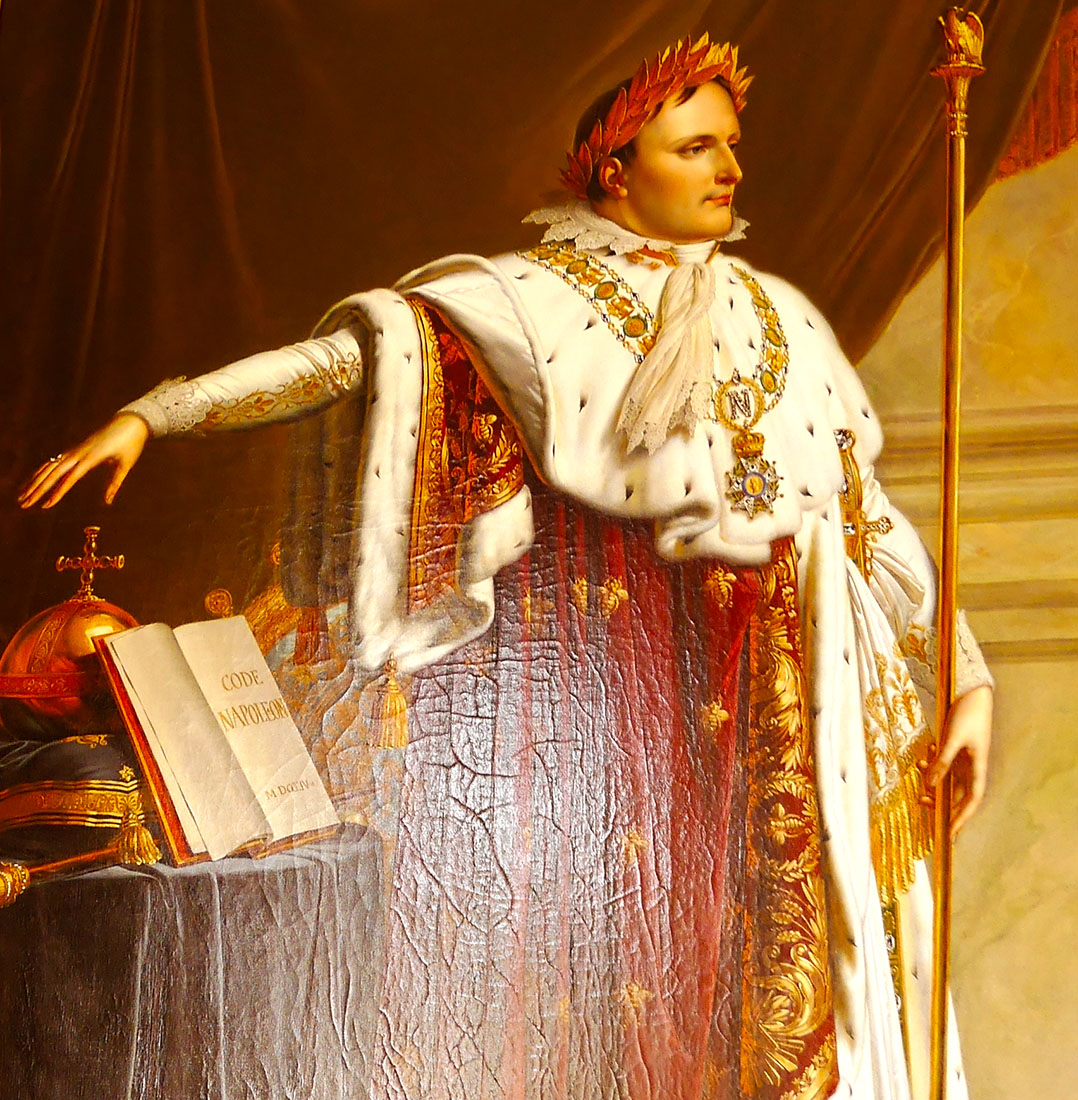Nachfolgend Roys Eindrücke auf Englisch. Wer auf Deutsch wissen möchte, was er zu sagen hat, kann seinen Text kopieren, auf diesen Link klicken und den Text dort in die Box platzieren.
Having meandered on the Seine through the vast Forest of Fontainebleau, I decided to visit the famed palace itself. Inexplicably, dogs are unwelcome in this former royal hunting estate, so Neira and her faithful attendant, Aila, could not make the trip. Anyhoo, it's another mind-boggling pile of stone dedicated to the occasional residence of an exalted ruler.
Occupied since the Middle Ages, and extensively renovated by Napoleon at the start of the 19th century, most of the time it was less visited than Mar-a-Lago is today. No golf, I guess. Touring some of the 1300 rooms with the aid of an excellent audio guide, one cannot help but be struck by the fact that the French decapitated their "elites," the aristos, in the Revolution of 1789 only to install Bonaparte as Emperor just a few years later. One of history's great enigmas (or at least one of the larger gaps in my meager historical knowledge base).
I liked this map showing how Napoleon held sway over much of Europe after marrying into the those alliance-making Hapsburgs (who generally spent more time worrying about the new uniforms of their equerries than actually ruling).
The personalized union of Austria and France, a vision of European harmony still out of reach...
I enjoyed the Renaissance wing, decorated in the 16th century and "unimproved" by Napoleon.
Francois the First, 1494-1547, looking good!
I found it interesting that a lot of the decoration was overseen by Florentines. It seems the Italians had what the client wanted, a kind of gilded overkill with a bit of the erotic on the side. Of course, Henry II was married to Catherine de' Medici, so the Italian connection is clear.
On the whole it was very much worth the visit even if it's now largely a monument to Napoleon. (His heirs donated a lot of material to France in the 1980s and it had go somewhere....) Peter the Great visited Fontainebleau in 1717 and evidently found it lacking. Versailles and another royal palace, Chateau Marly, were more to his taste when he built Peterhof outside St. Petersburg.












